-
Posts
4,822 -
Joined
-
Last visited
Content Type
Profiles
Forums
Gallery
Events
Posts posted by gjdale
-
-
Thank you very much Glen, Bob, and Dave for the kind comments, and also for all of the likes.
Glen - the “scrap” is in relation to it’s use as a furniture piece. It certainly came up nicely with a bit of oil. 😊
Bob - to answer your questions, the two lines that pull the mast up form part of the finished rigging (they become the forestays). They pass through some small holes in the bowsprit. If you zoom in on the photo you will be able to see these holes.
Once in position, the lines are held in tension (with a small weight) while a drop of glue is applied (very carefully, with a long bamboo skewer) to the bowsprit holes to fix the lines. Once the glue is dry, the excess line is trimmed with a sharp blade attached to a long “handle” (a long piece of square stock). Another small tool attached to a long “handle” is then used to straighten out the sails/yards as required.
5 hours ago, BobG said:I love your eclectic modeling interests and always look forward to what you may select to build next
….just wait ‘til you see what’s next…..😎😉
-
Thanks for the kind comments and the likes folks.
I made a simple display base from some scrap walnut I had laying around in the “big” workshop. I had considered doing something more elaborate but, in the end, decided that less is more. I have ordered a small brass name plaque that will be placed on the front bevelled edge, but otherwise I’m calling this done.
Final photos (pending receipt of name plaque).
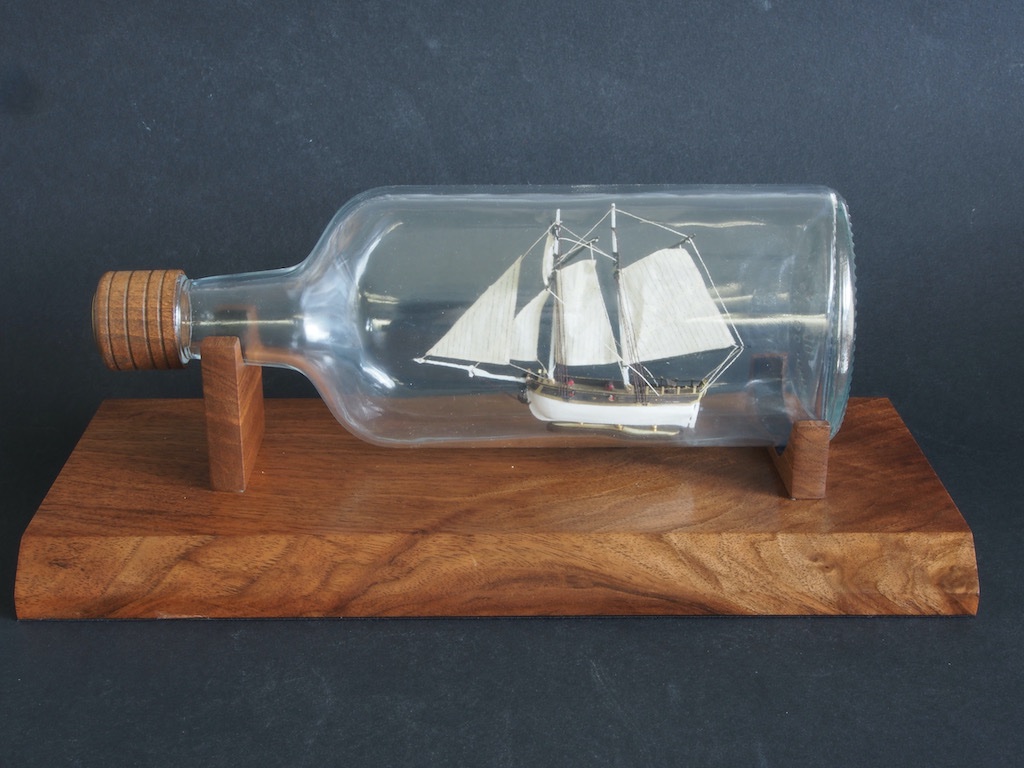
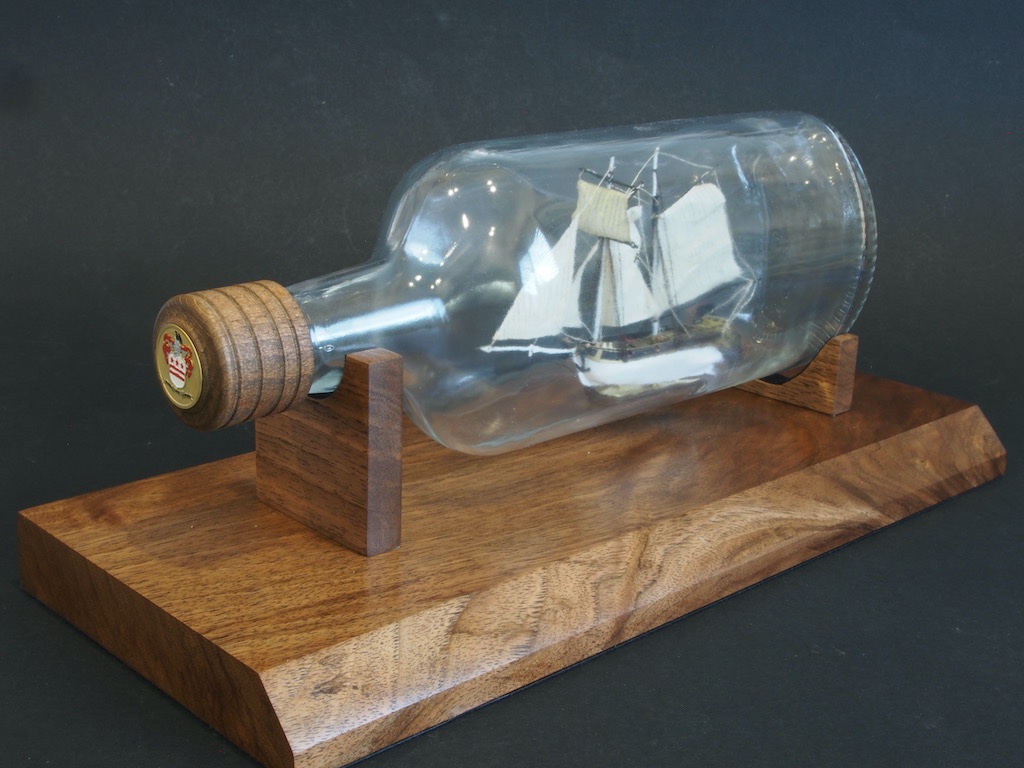
-
Welcome to MSW, Farmer. You’ll find quite a few of us Aussies here. Regarding first kit choice, you might take a look at the offerings from Vanguard models. Chris Watton (the owner/designer) is producing quality kits across a range of levels, including some nice designs specifically aimed at the beginner and ranging right up to more complex builds. His instructions are first class and you will find many build logs here to help you as well. Chris/Vanguard are also a sponsor of this site. Although they are UK based, you won’t have any issue with importing kits (other than the postage cost!).
- Keith Black and mtaylor
-
 2
2
-
-
Well, she’s in! I didn’t use the kit provided tool to insert the ship into the bottle. Instead I used a very long haemostat that I’ve had in my toolbox for years – I think this may be the first time I’ve used it. Getting the ship into the bottle and placed on the stand within the bottle went relatively smoothly with only a few choice words of encouragement along the way. I was a little concerned that it is only held in place by two very small dobs of 5 min epoxy, but it seems to be holding up okay so far.
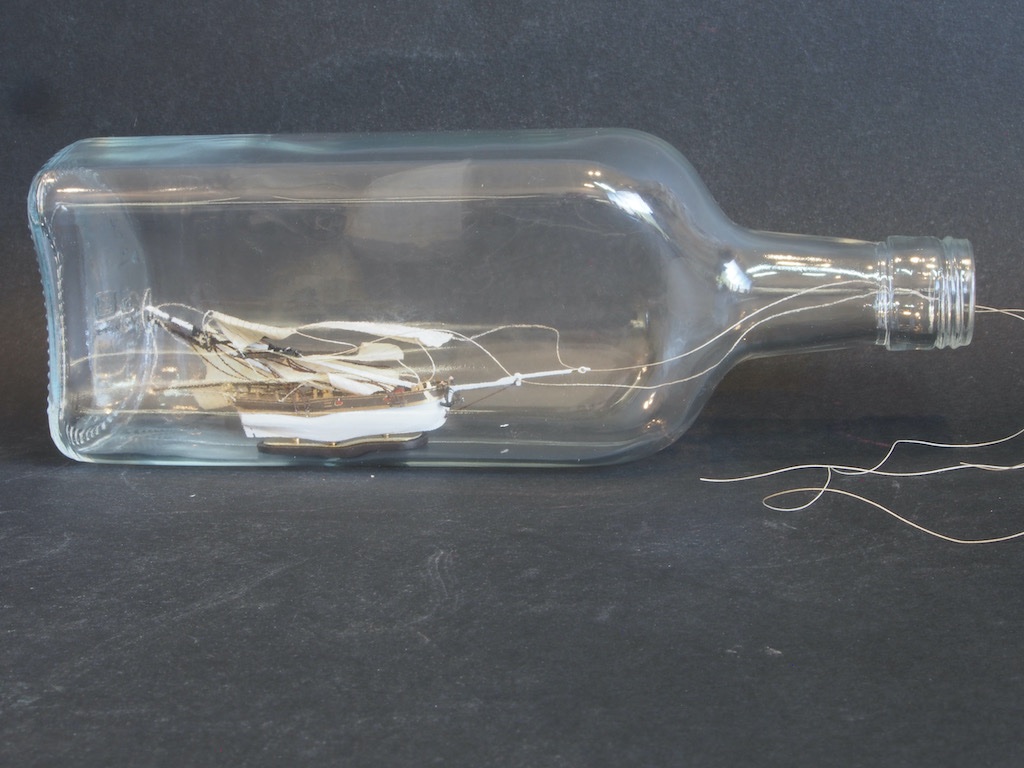
I let the glue cure for about 90 mins before attempting to raise the masts. This went mainly smoothly, although I had some difficulty re-positioning the sails, gaffs and the yards. In the end I had to say “good enough” as any further messing around was only going to lead to irreparable damage.
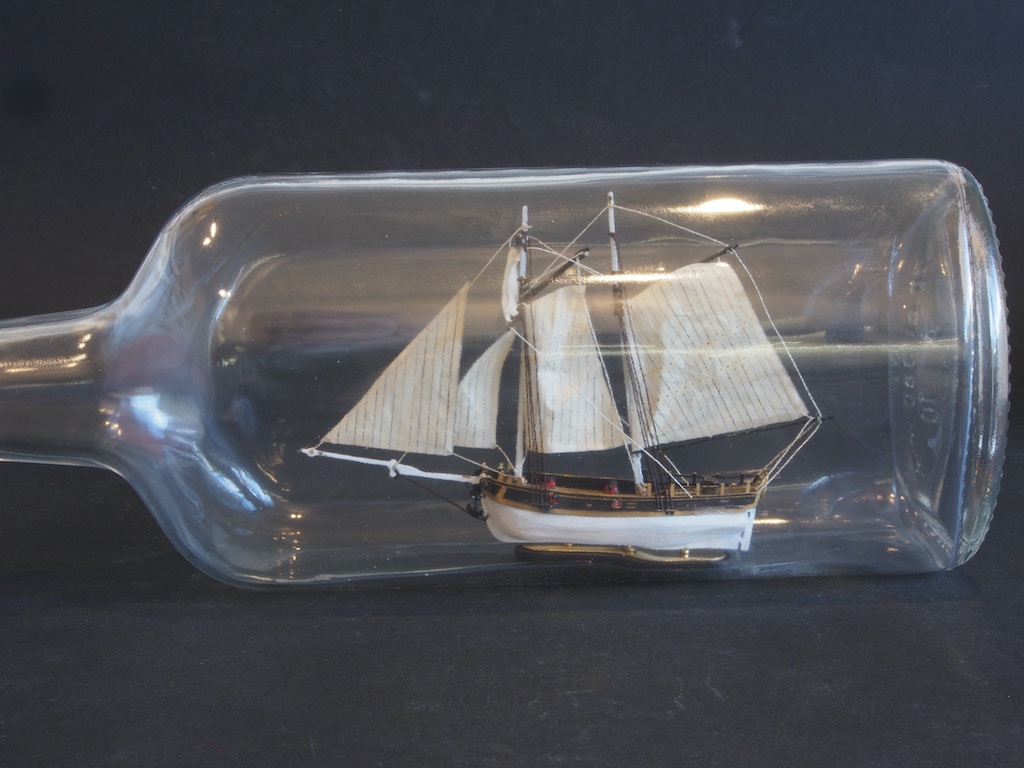
I now need to complete the display base and mount the bottle on it. I’ll be back in a couple of days with some final completion photos.
-
Another minor update. I glued the stand inside the bottle today. I wasn’t convinced I’d be able to get the ship’s keel to sit properly on the two fore/aft pegs, so I filed them flat. This will give the added bonus of reducing the height of the ship inside the bottle slightly.
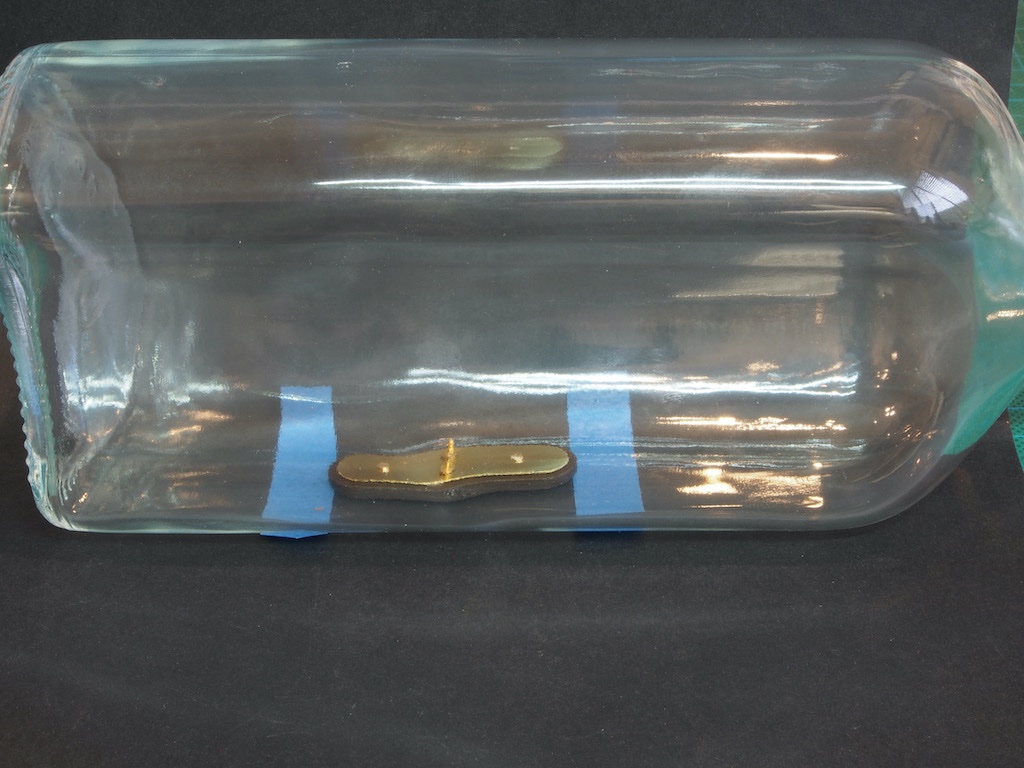
I then went to test “fold” everything up to do a test fit in the neck of the bottle, and this is where I ran into my first major problem. It seems that the inner jib needed to be able move along it’s halyard that is also one of the outhauls. If not, it jams the masts and prevents them from lowering properly. That meant that I had to detach the line from where I had glued it to the sail with acrylic matt medium. A nerve wracking task, but I was able to achieve it in the end.
I also found a similar problem with the gaff rigged sails. Unless the outer/rear edge of the sail was able to move along that line, it would prevent the gaff from folding up. So I had to repeat the process twice more before I was able to finally get the ship folded up.
Then I was able to test fit it into the neck of the bottle. It goes, but there is no doubt that it’s a tight fit.
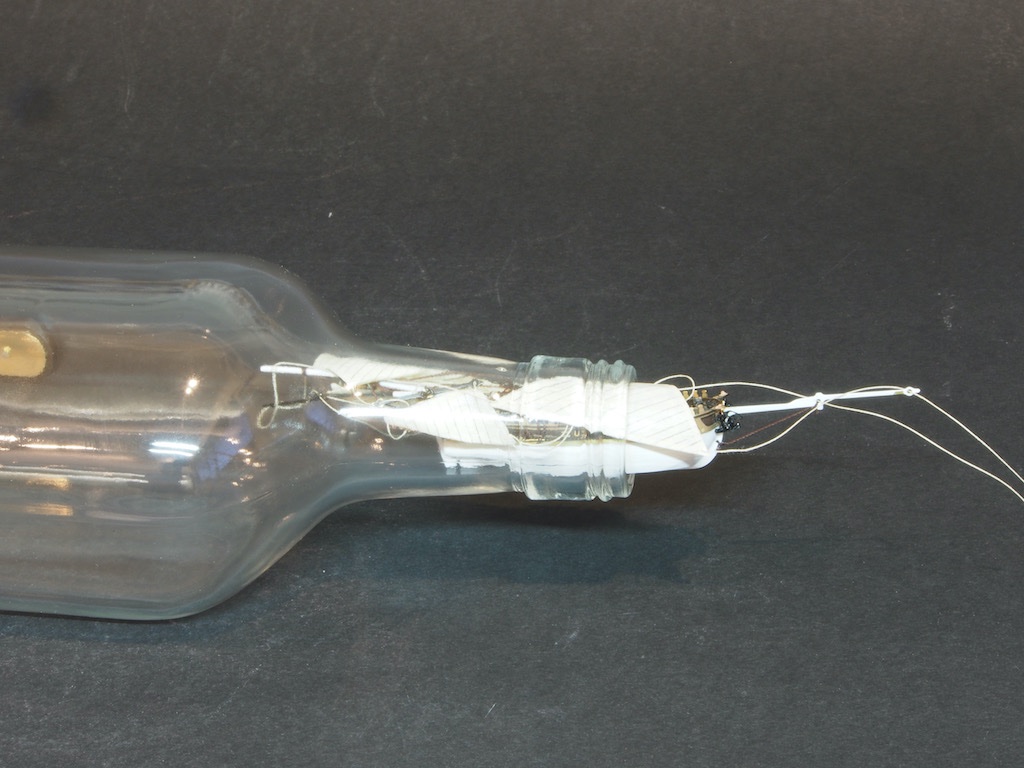
Tomorrow I will make the final insertion into the bottle and hope that I am able to get the sails properly adjusted once the masts are raised.
- a49kid, Dave_E, Blue Ensign and 6 others
-
 9
9
-
Looks like it might be interesting getting those two back out again..............
- Keith Black and mtaylor
-
 2
2
-
Can’t wait to see the miniature farm Glen!
- Keith Black and mtaylor
-
 2
2
-
Another minor update. I completed the rigging today. I chose not to install the large square sail on the foremast as I think it makes it look a little too crowded. The box art also shows the model without this sail installed – good enough for me!
I opted not to use any of the kit supplied rigging thread, choosing instead some from my own collection. I used a dark brown for the standing rigging and a light tan for the running rigging. The kit instructions suggest melting the ends of the lines instead of tying knots. I wasn’t convinced that this would hold, so used knots reinforced with a dab of CA glue.
The pegs on the bowsprit are holding the outhaul lines in place. Once ready for the “smash and stuff” with the bottle, these will be released and the mast and rigging folded down. Had to get a photo at this point in case it all goes horribly wrong from here!
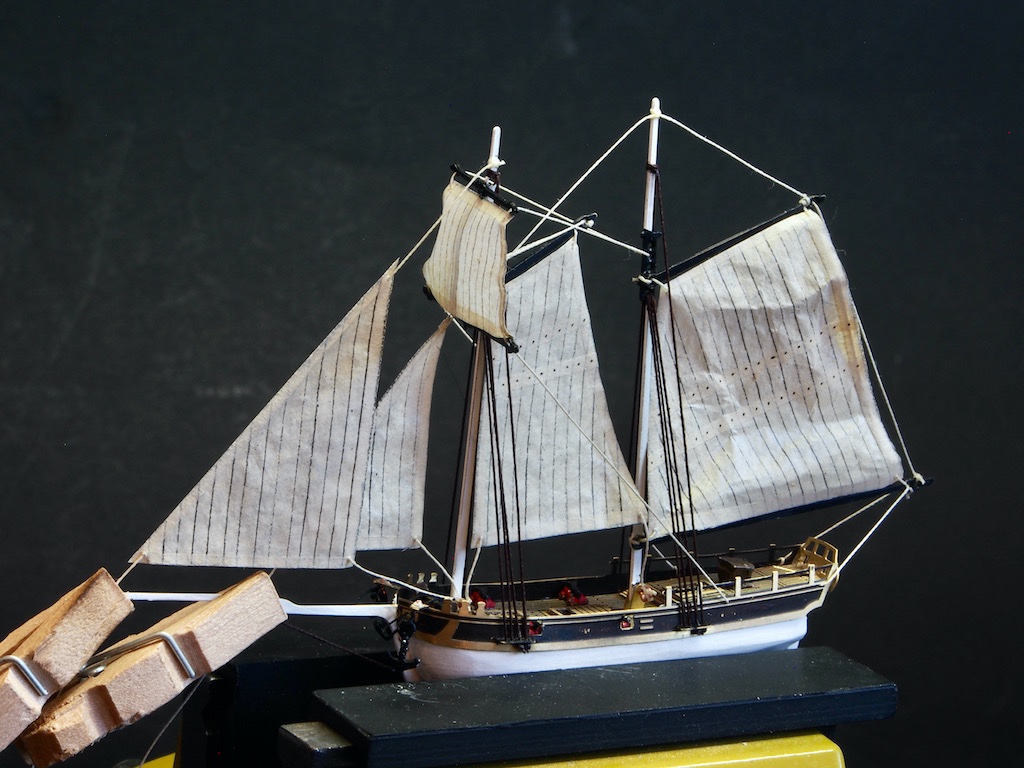
I’m now working on the display base. I’ve found a nice piece of walnut in my furniture timber stash and have made some boxwood dowels as well. The plan is to produce something similar, but not identical, to the display that Glen McGuire used in his excellent rendition of this model.
-
Nice work Greg. Thanks for the machining tip - something that has always left me scratching my head for a solution.
- Keith Black, Rustyj, mtaylor and 2 others
-
 5
5
-
Great job Chris. I'm sure the kids will treasure this for many years to come.
- hof00, king derelict, mtaylor and 2 others
-
 5
5
-
-
A minor progress update. The fore/aft sails are connected to their respective gaffs and the gaffs as well as the yards are connected to the masts prior to installation on the ship. Rather than using the kit-provided line, I have used some quilting thread in lieu. The line is attached to the sails using diluted acrylic matt medium.
In the picture below, the masts are held in an ordinary plastic clothes peg for stability, and I have inserted a toothpick into the photos as a scale reference.
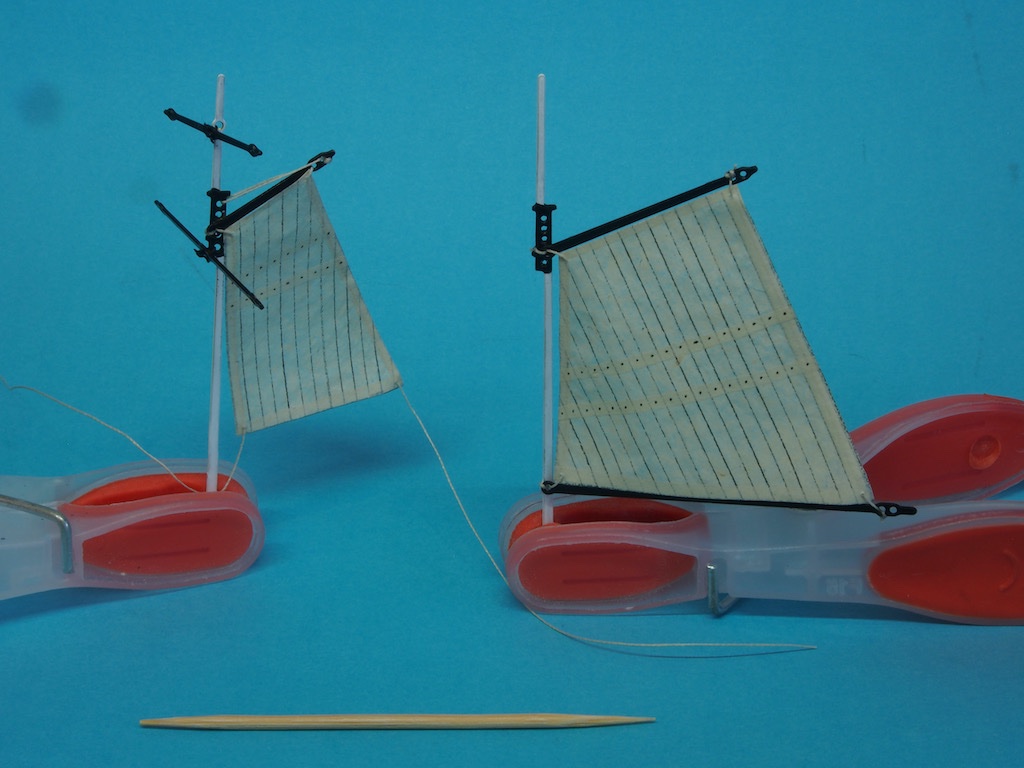
And here is a picture of one of the jib sails, complete with boltrope (which will also become part of the rigging process, and ultimately the means by which one of the masts is raised.
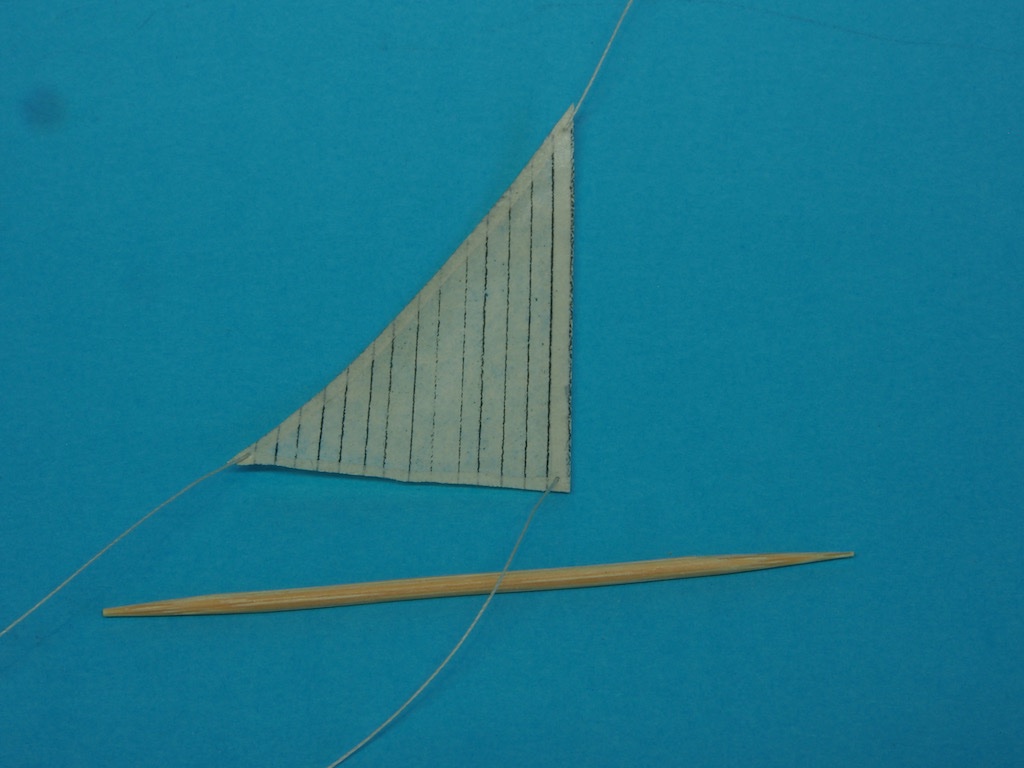
Not far from "bottle smash time" now.....
- Glen McGuire, ccoyle, Keith Black and 3 others
-
 6
6
-
-
That’s quite a feat on the #80 drill bit Glen - no wonder you needed the adult beverages! Even greater feat to achieve the batten making after said adult beverages! 😊
Looking good.
- Glen McGuire, Keith Black, BANYAN and 2 others
-
 3
3
-
 2
2
-
Thanks Glen,
I’m a little anxious about that too. Guess we’ll find out soon!
By the way, it’s not “my” method - it’s David Antscherl’s (and he goes into a lot more detail for adding details to sails at a larger scale). Gotta give credit where it is due. 😊
- mtaylor, Glen McGuire and Keith Black
-
 3
3
-
After deciding that the cloth from the Admiral’s stash would not do the job, I decided to have a go at making the sails from silkspan, following the tutorial by David Antscherl in his Sail Making Supplement to Vol IV of TFFM. It took a while to obtain the various supplies needed, but in the end proved to be a lot easier to do than I had anticipated.
It all starts with making a frame with a removable centre or “plug”. I knocked one up from some scraps of melamine I had lying around. Nothing fancy here, just held together with pocket screws.

Here’s the back, showing the construction method:

A piece of Silkspan is then cut a little wider than the opening. The Silkspan is then soaked in water for a couple of minutes and then laid over the frame (with plug inserted for suppot). Gummed brown tape (as used by artists) is then applied to secure the edges of the Silkspan. The frame is then lifted clear of the plug and the Silkspan allowed to dry. As it does so, it tightens like a drum skin.
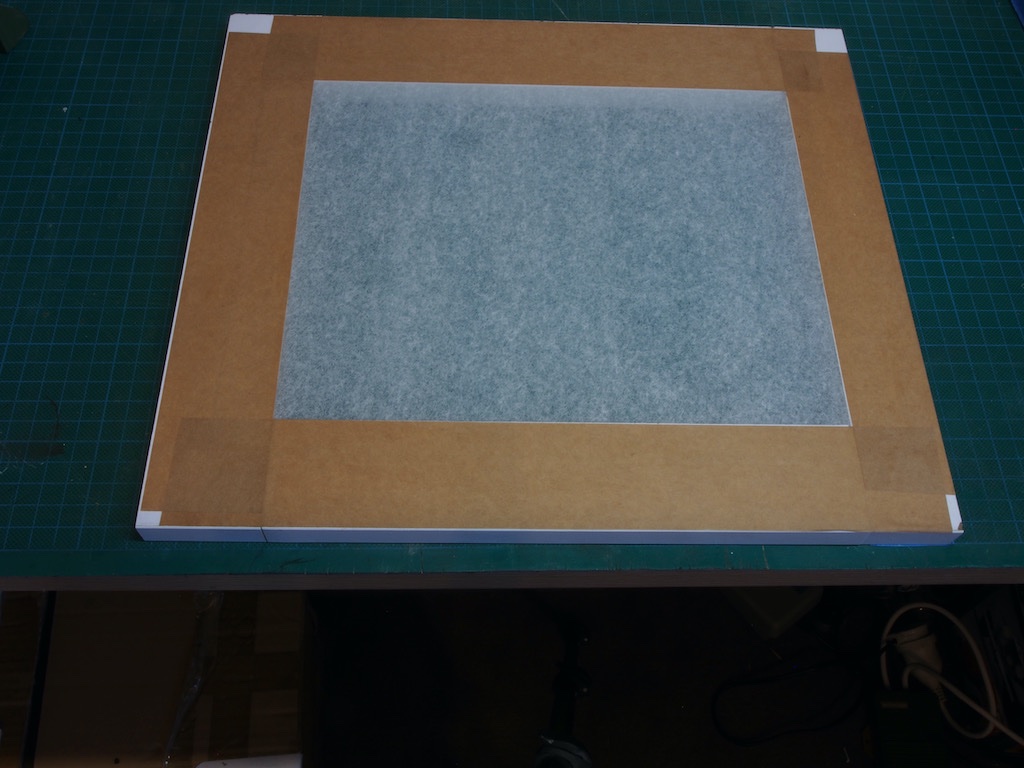
A wash is then applied using very dilute unbleached titanium white acrylic paint. I found that three applications were required to give the desired colour.
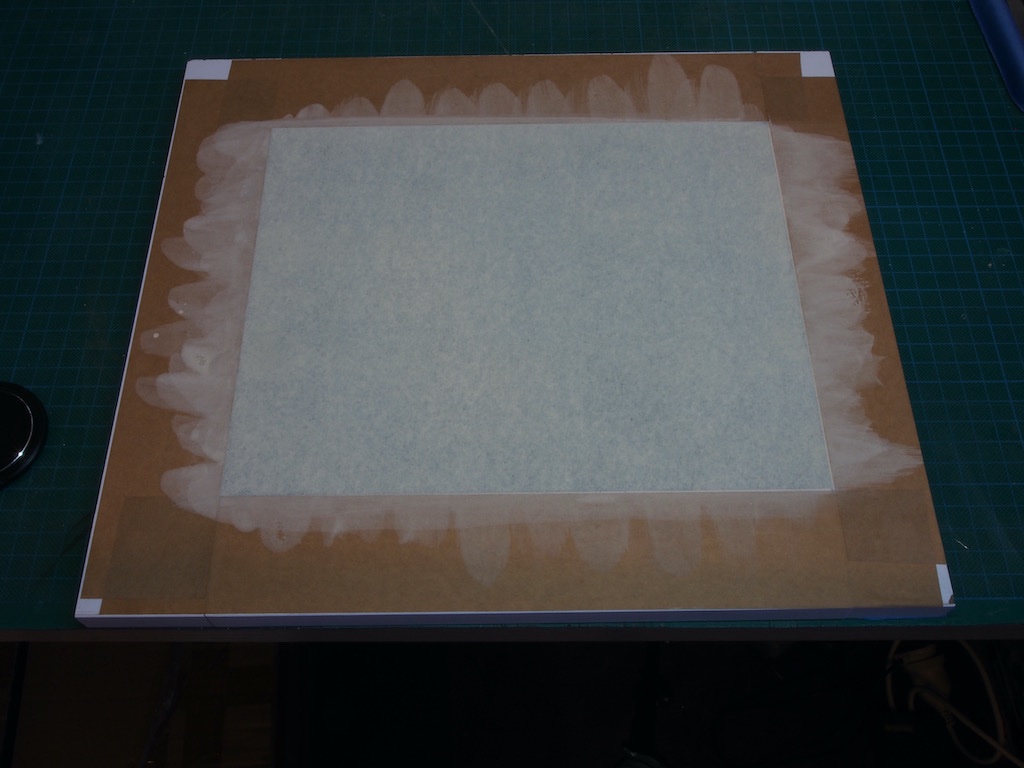
The photos don’t show the colour very well, but here is a side-by-side of with some untreated Silkspan for comparison.
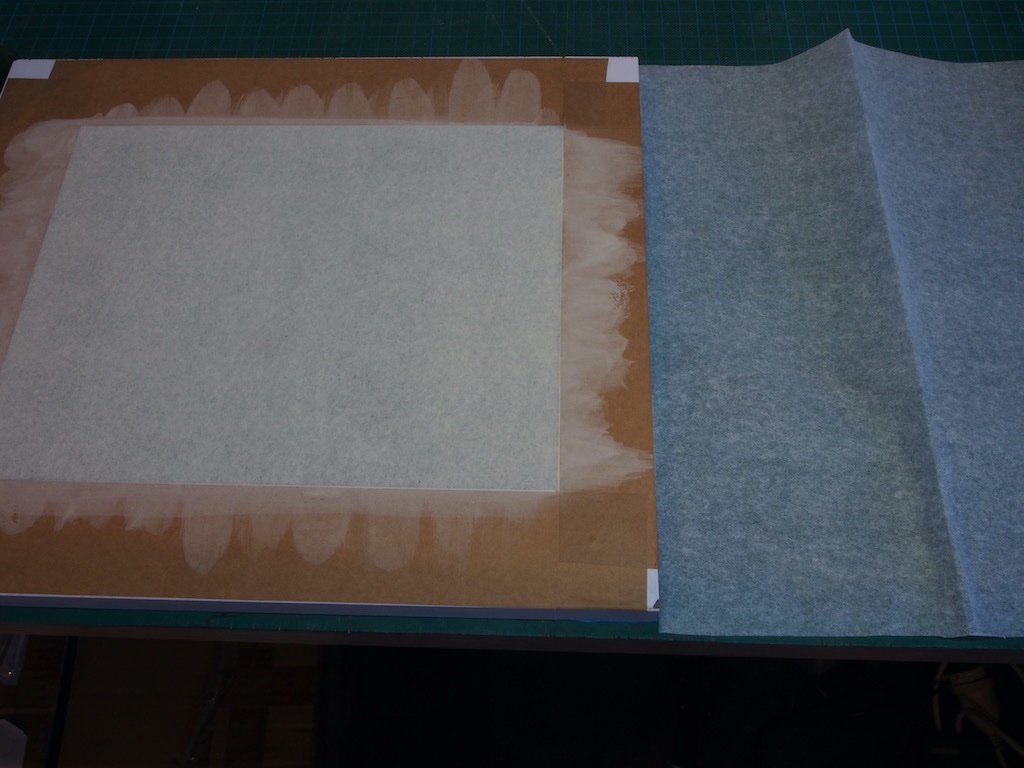
The next step is to draw some parallel lines to represent the cloths of the sail and their seams. Antscherl recommends using a Bow Pen (known as a Ruling Pen here in Australia) with a mix of unbleached titanium white and yellow oxide paint. Instead, I tried using some Sepia ink. Unfortunately, while the Bow Pen may work well at 1:48 scale, it is not so useful at 1:300 scale. The width of the sail cloths is 21” full size, which translates to a little under 2mm at 1:300 scale, while the seam width of 1 ½” full size translates to less than 0.2mm at 1:300 scale. Using the Bow Pen at its narrowest setting I doubled the sail cloth width to leave more space between seams, but the Bow Pen line still looked too large to my eye. Having looked for alternatives, I managed to find a Copic liner pen at 0.03mm. The only catch was that the only colour this comes in is black. I drew these lines on my sail cloth, at the correct 2mm spacing and decided that these looked okay. I then made some carboard templates using the kit-provided sails as pre-templates, and drew the sail outlines onto my prepared cloth.
In the picture below, you can see how I’ve tested these against the Bow Pen/Sepia Ink, the Copic Liner, and no lines. For reference, I’ve placed the kit-provided sails on the right in the picture.
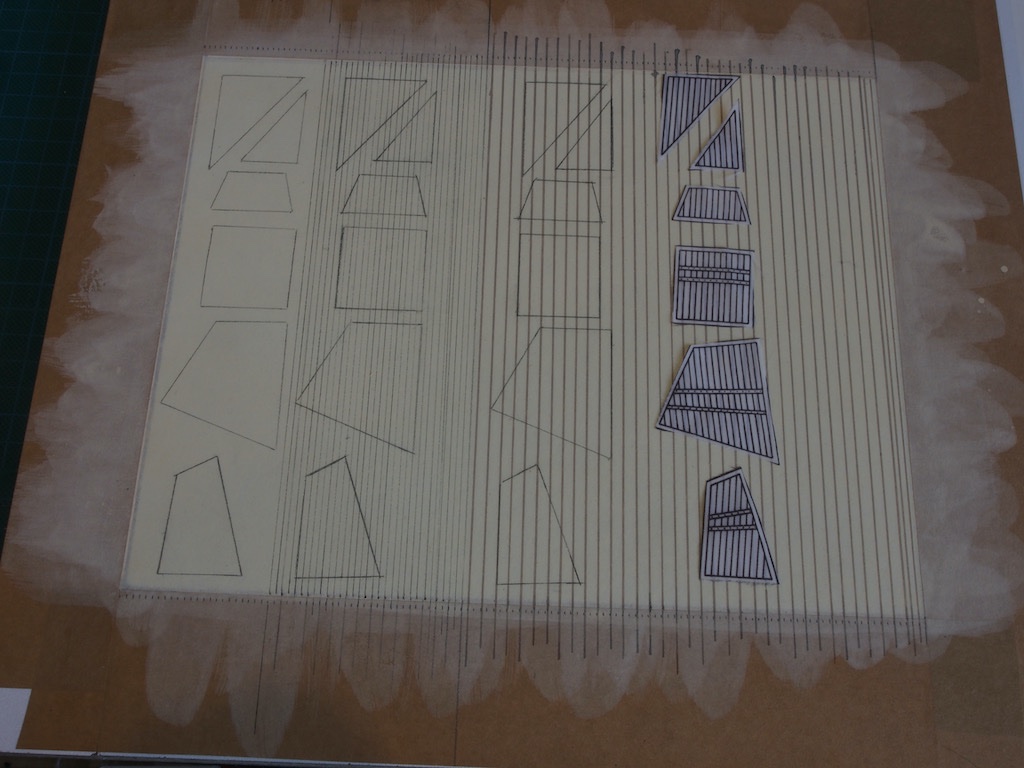
The next stage was to add reinforcing seams around the edges of the sails. For this I cut 1/16” wide strips from a previously prepared piece of sail cloth and added them around the edges of all sails and then also across the reef bands, attaching them with diluted acrylic matt medium. I used my “non-preferred” areas as practice for this part, as shown in this photo.
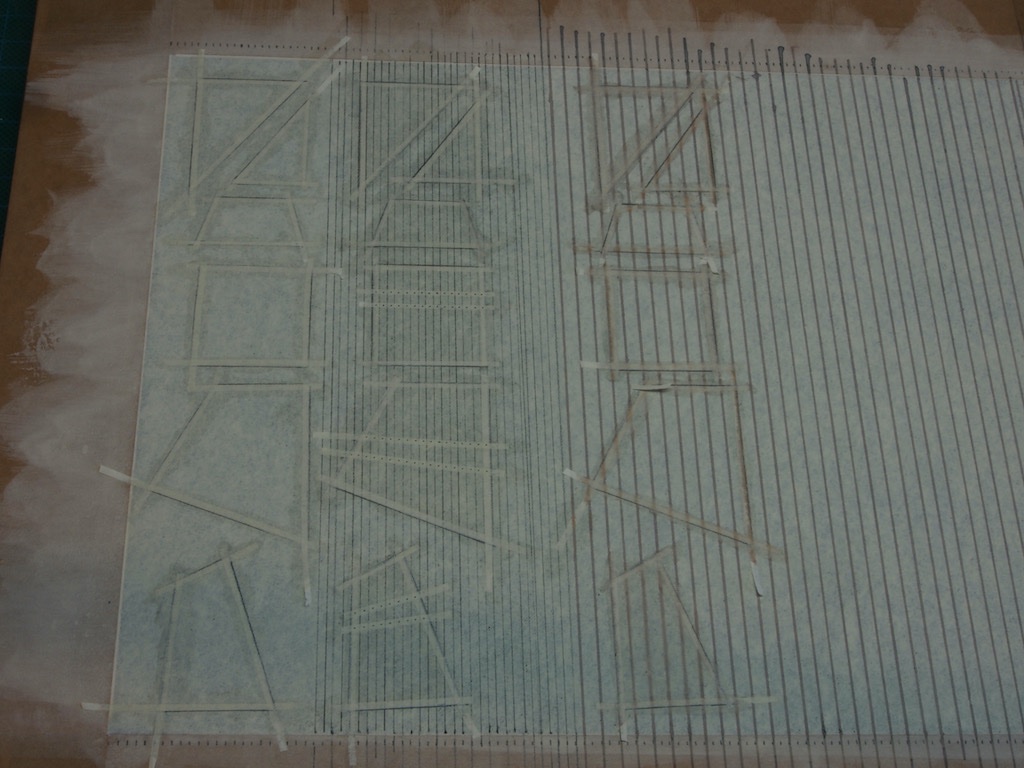
Grommets for the reefing points were then added by placing a small dot using the 0.03mm Copic liner pen. And finally, the sails were cut free from the frame using a scalpel with a fresh blade.
Here is a shot of the completed sail set, with the kit-provided sails above them for reference.
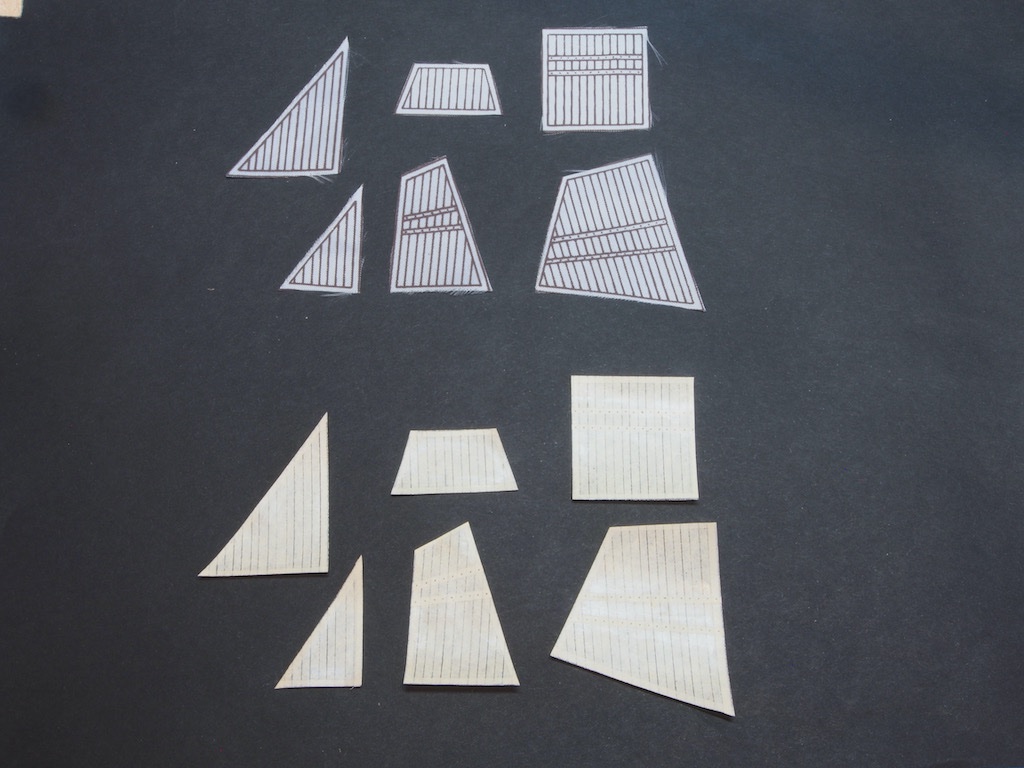
And here is a slightly closer shot of just my made sails.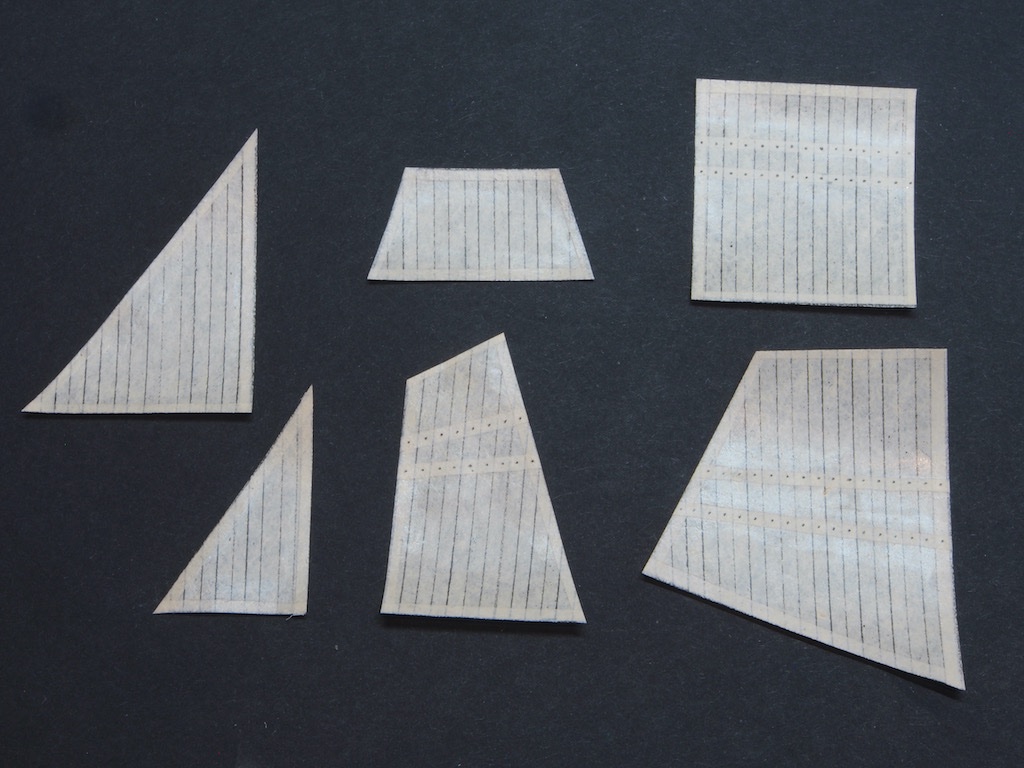
I’m quite happy with the way they turned out. I thought they might be very stiff, but they appear to be quite flexible, yet strong. It remains to be seen what happens when they get mashed up to squeeze into the bottle neck!
-
Can’t wait to see what you’ll do next with this one Glen.
- Glen McGuire, mtaylor and Keith Black
-
 2
2
-
 1
1
-
I wasn’t happy with the replacement sail material from the Admiral’s stash, so I’ve decided to have a go at using silk span. I have the “tutorial” addendum from David Antshcerl’s TFFM series and have ordered some silk span. So, there will be a brief hiatus while I await the material and do some testing. Stay tuned….
- mtaylor and Keith Black
-
 2
2
-
15 hours ago, Landlubber Mike said:
Be careful with the PE bowsprit and masts. If they get bent, I’d wait until the very end to fix them. It only takes a few bends and the PE will split.
15 hours ago, Landlubber Mike said:You might want to measure the inside of the bottle to make sure you can safely raise the main mast fully.
Thanks for the heads-up on both counts Mike.
-
Now that is curious Glen. Even the photo in my instructions shows the backwards ‘N’. I wonder how/when that changed in the production process?
B.E. - I’ll try to remember to take some photos during the bottling process, but I’m a bit slack with the photos sometimes when I get absorbed in what I’m doing. It’s the one part of this build that scares me more than any other.
- Keith Black, mtaylor, Glen McGuire and 1 other
-
 3
3
-
 1
1
-
Flat through the neck of the bottle, and then raised B.E.
- mtaylor and Blue Ensign
-
 2
2
-
Thanks for the kind comments and the likes.
Some more progress over the last couple of days. The hull is now complete, barring some additional touch-up painting. Not much to say about adding the deck furniture, other than it is tiny! I needed to file the bottoms of the gun carriages slightly to enable a good fit of the gun barrels through the ports. The anchors appear to be grossly over-size for the scale, but they are still tiny.
Here are some overview photos of the current state of play.


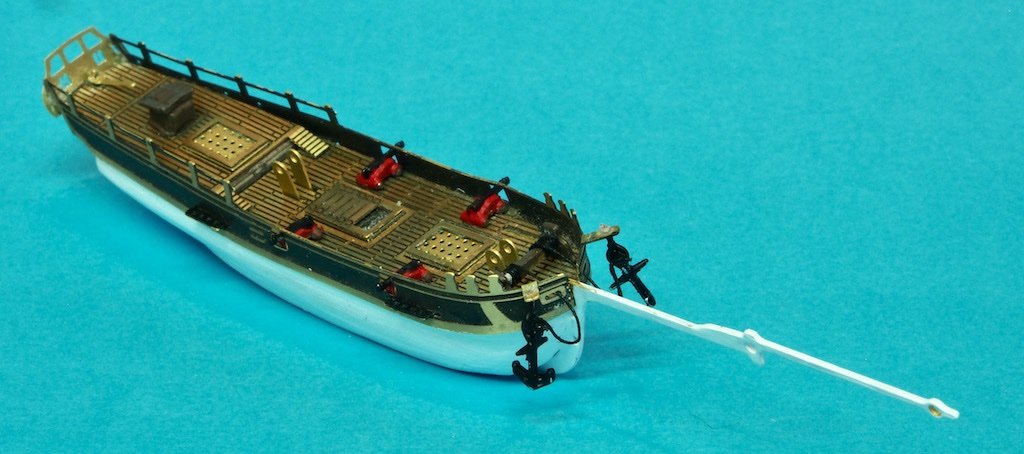
And here’s a close-up of the transom. The macro lens is brutal, but notice that one of the “N”s is backwards. I have no idea if that is how it was done on the real ship.
I also painted the coat of arms for the bottle top today. The photo is not particularly flattering, but it looks fine from normal viewing distance.
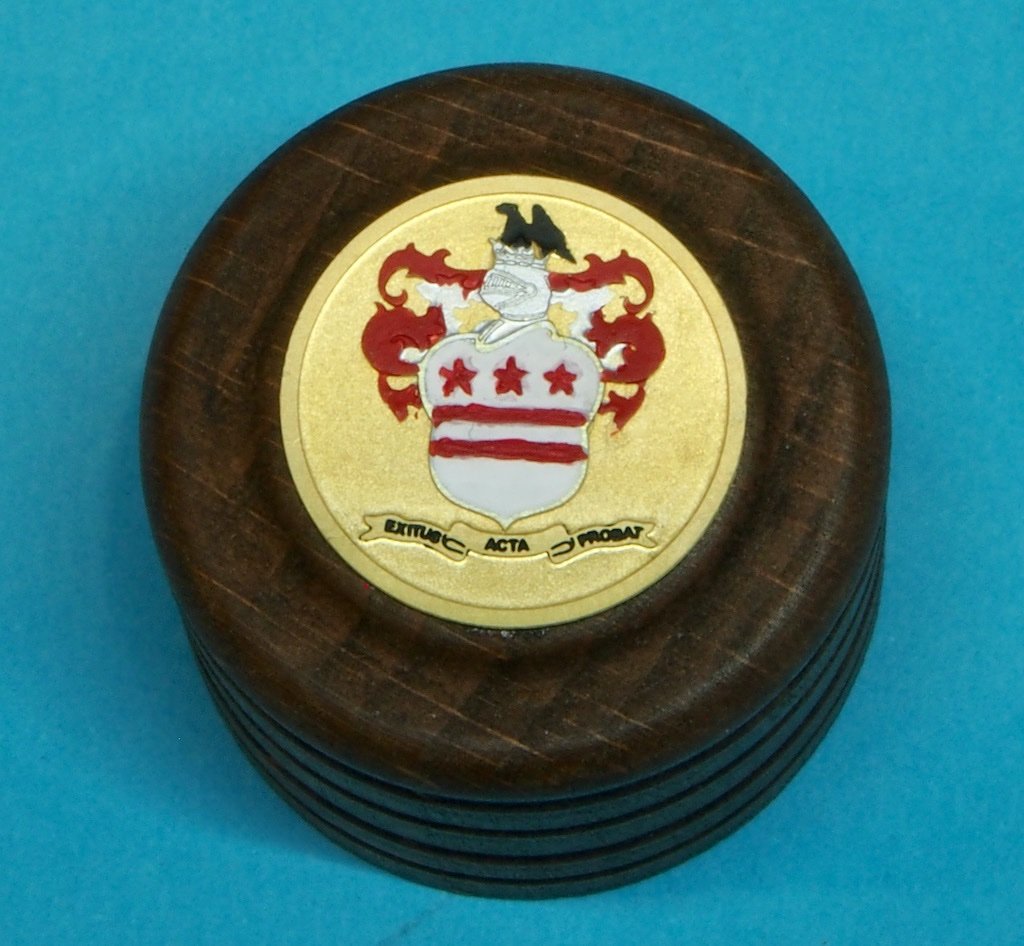
Onto the rigging next. The first job will be to re-make the sails. I’ll be following the excellent example of Glen McGuire when I tackle this. I’ve already sourced some replacement material form the Admiral’s sewing stash, so am ready to go.
- Knocklouder, Ian_Grant, GrandpaPhil and 4 others
-
 7
7
-
She’s looking beautiful Bob. Great to see you back at it again.




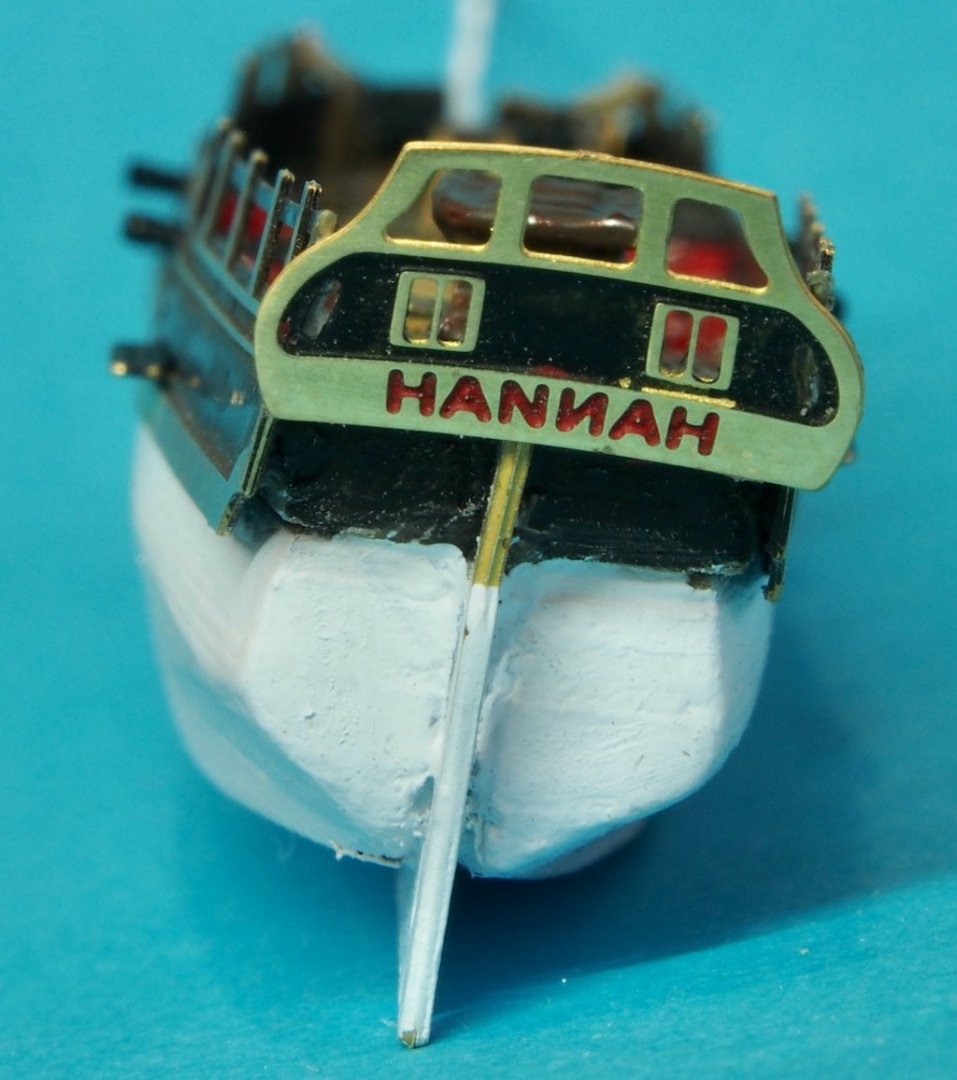
Hannah by gjdale (Grant) - FINISHED - Amati - 1:300 - BOTTLE
in - Kit build logs for subjects built from 1751 - 1800
Posted
Yes Bob - matter of fact, I was out riding this morning. Have recently clocked up just over 1,000km and the bike has just had it’s 50hr service. I try to ride at least twice per week with a buddy of mine. We vary between leisurely “cafe rides” and more challenging longer distances.